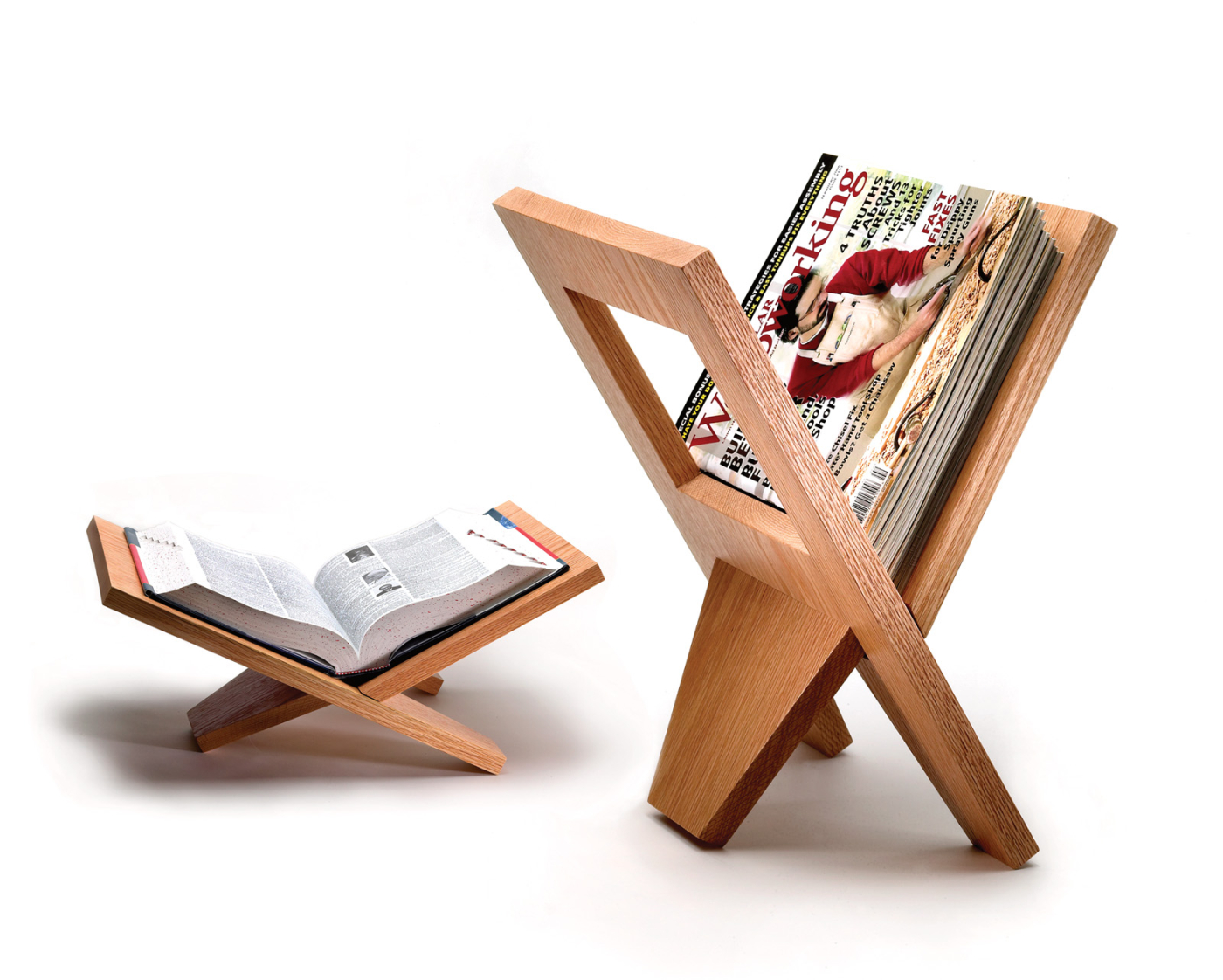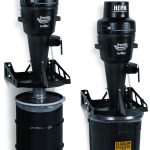We may receive a commission when you use our affiliate links. However, this does not impact our recommendations.
 Two bits of wood and a jigsaw are what you need to make this magazine rack that converts to a bookstand.
Two bits of wood and a jigsaw are what you need to make this magazine rack that converts to a bookstand.
Because you’re holding this magazine (Editor’s note: please pretend you are reading this article in a magazine), chances are you could use a magazine rack by your favorite chair to hold your current crop of periodicals and catalogs.
And because you like magazines, I suspect that you also like books, and you might have need for a stand to hold open your favorite reference book – whether that’s a dictionary, “Baking Illustrated” or “Tage Frid Teaches Woodworking.”
If you’re nodding your head in agreement to either of the above statements, we have one project that can scratch both itches. This simple project has only two parts and they interlock: Slide them together one way and they make a magazine rack; slide them together the other way and they make a bookstand.
And here’s the best part: You need only a handful of tools to make this project. Plus, it’s a quick job; I built the version shown here in just a couple hours. It’s the perfect “I Can Do That” project.
Gather Your Materials
As with all “I Can Do That” projects, we buy all our materials from the local home center. So with a construction drawing in hand I hit the lumber section. I wasn’t happy with the No. 2 pine in the racks. The poplar was an uninspiring purple. But there were a couple promising red oak 1 x 12s. These were expensive: $55 for a 6′ length. But that was enough to make two racks, so I pulled the trigger.
Make a Simple Jig
This project requires you to set the base of your jigsaw at 35° to the blade, sometimes tilted left and sometimes tilted right. To make these changes quickly and reliably, I made a little jig from a scrap. You don’t have to make the jig for this project, but it sure makes life easy.

This scrap of wood acts as a reliable way to set your jigsaw’s base to 35°. I found a protractor difficult to balance on the base and not nearly as accurate.
My blade-setting jig was made from a scrap piece of 3⁄4“-thick plywood that was about 3″ wide and 12″ long. I cut one end at 90° on my miter saw. Then I set the saw to make a 35° miter and cut off about 3” of the plywood. The piece that falls off is the jig for setting the blade.
By placing the jig on the saw’s base you can tilt the base to 35° left and right quickly. And you can use the square edge of the jig to return the saw’s blade to 90°.
Make Your Straight Cuts
Use the drawing to lay out all your cuts. Then, with the blade set at 90°, make the cuts that define the two feet on one piece and the single foot on the other piece.
Then make the square-shaped cutouts on each piece. Here’s how: Drill a couple 3⁄8“-diameter holes near the corners of the square-shaped cutout. Then use your jigsaw to remove the waste and square up the corners.
Make Your Bevel Cuts
Tilt the jigsaw’s base to 35° left and make all the cuts you can with the blade tilted this direction. Then tilt the blade the other direction and make the remainder of the cuts on the two pieces. In the end you’ll have some waste hanging onto your work that needs to be removed with a coping saw. It’s simple work. If you don’t have a coping saw, use a chisel and a mallet to pop out the waste.

You can rotate the blade in its frame with a coping saw to make a tricky cut like this very easy.
Clean up all your cuts with a rasp, file and sandpaper. Then fit the two parts together – you might have to adjust a few edges with a rasp to get a good fit. If the part with the single leg is just a little too thick to fit through the slot in the other, reduce the thickness of the single leg with your block plane until everything fits. Sand all your parts and add a clear finish (or stain or paint).
In our office, we have far too many magazines for this project to be useful to us. So we’re going to use it as a stand for our office dictionary, which settles our debates on word usage. But if we ever need a magazine stand, it’s just a flip of the pieces away.
Magazine Rack Cut List
❏ 2 Interlocking slabs 3⁄4 – 11-1⁄4” x 16″ Red oak

Here are some supplies and tools we find essential in our everyday work around the shop. We may receive a commission from sales referred by our links; however, we have carefully selected these products for their usefulness and quality.



 Two bits of wood and a jigsaw are what you need to make this magazine rack that converts to a bookstand.
Two bits of wood and a jigsaw are what you need to make this magazine rack that converts to a bookstand.





